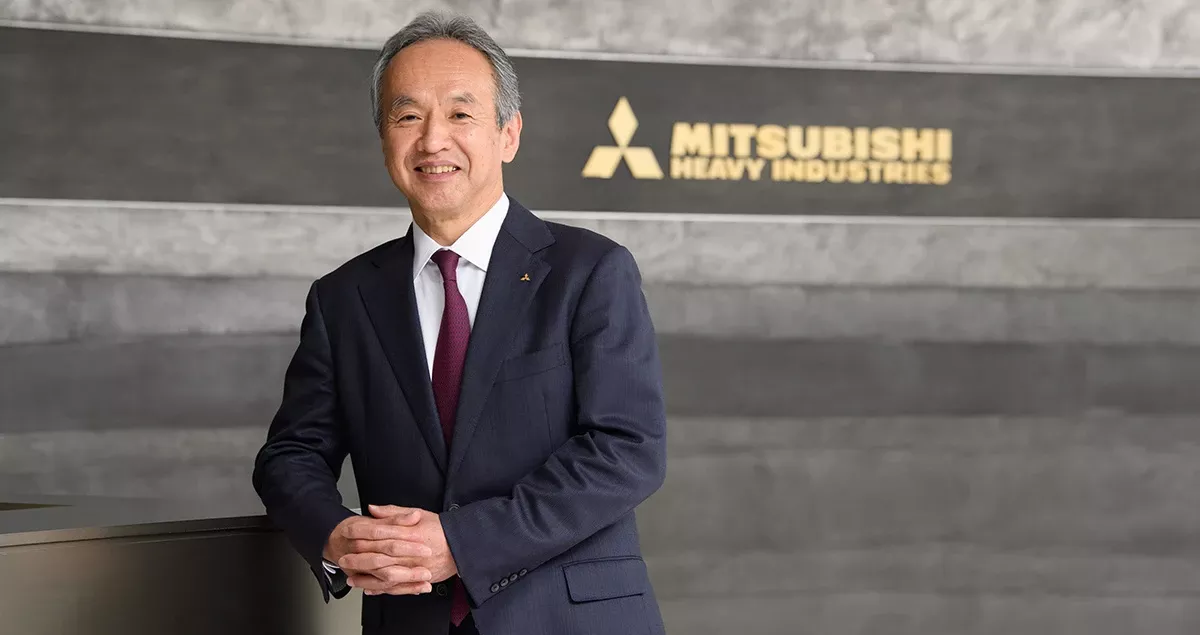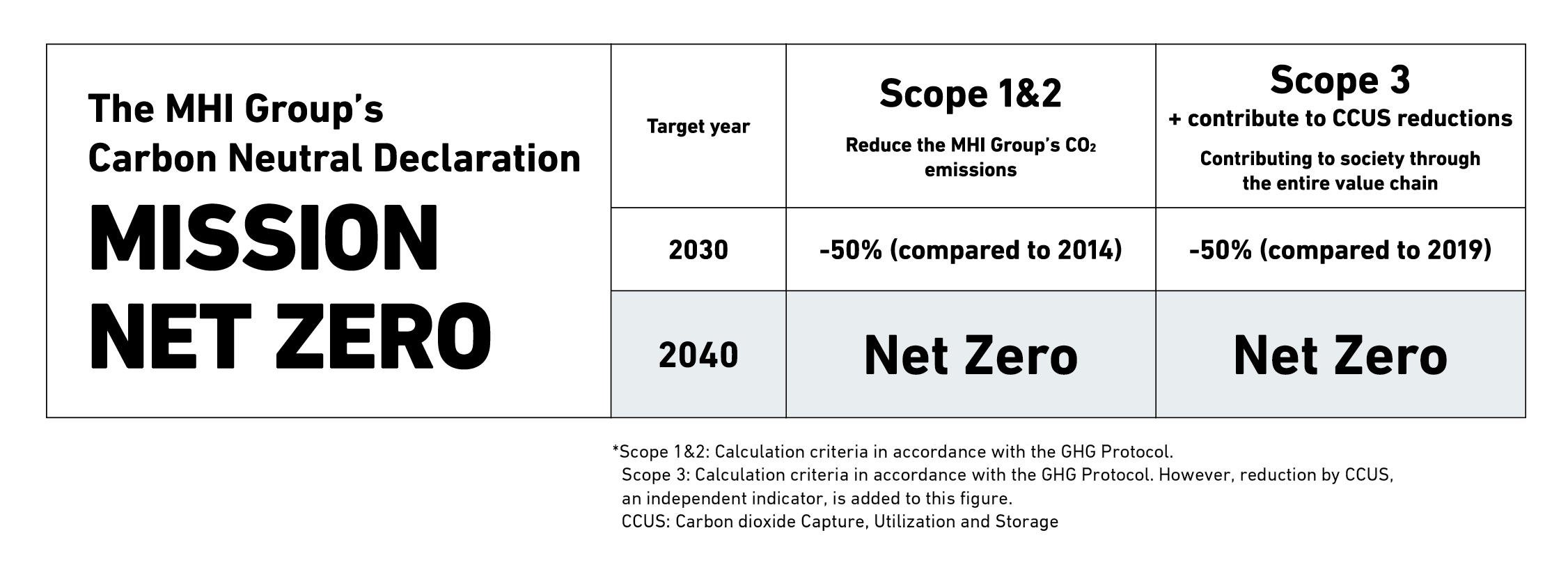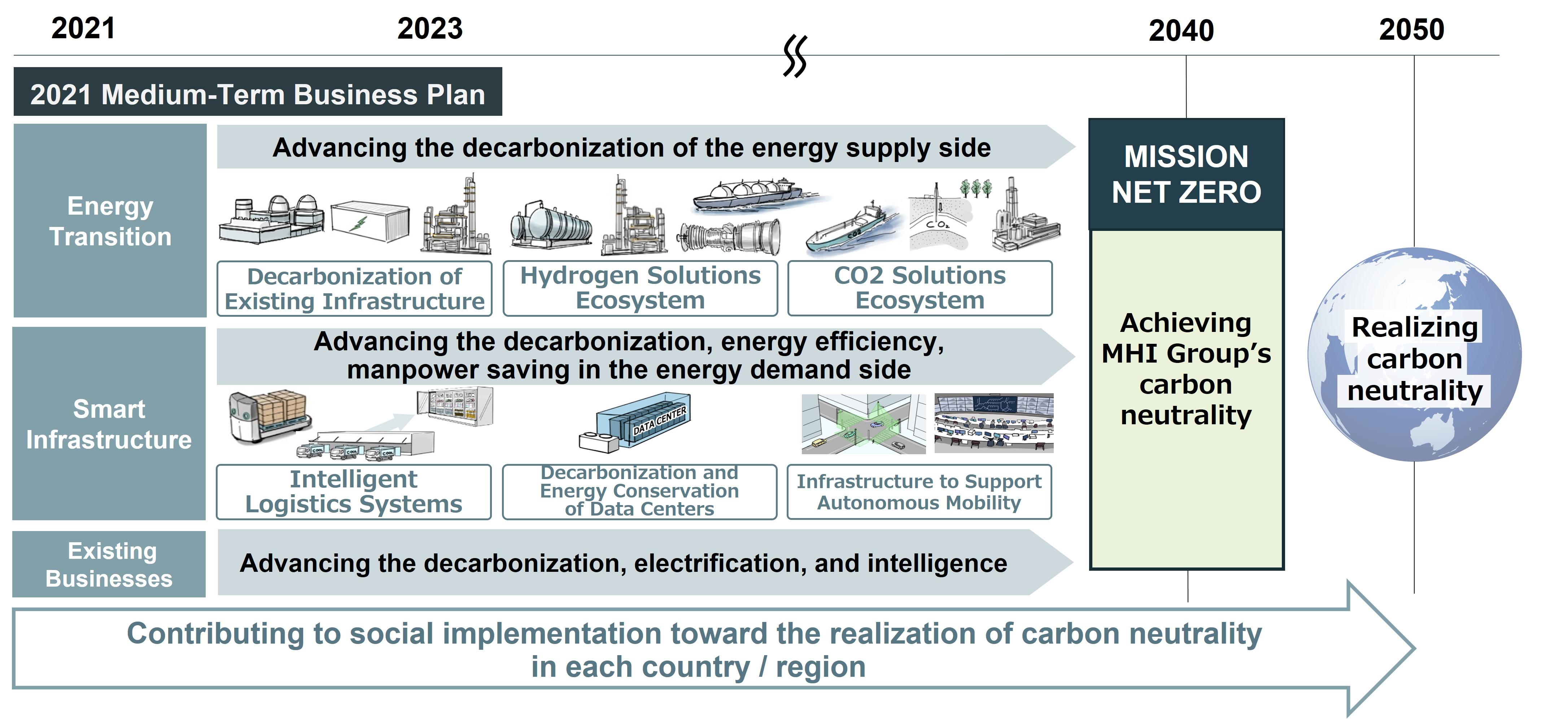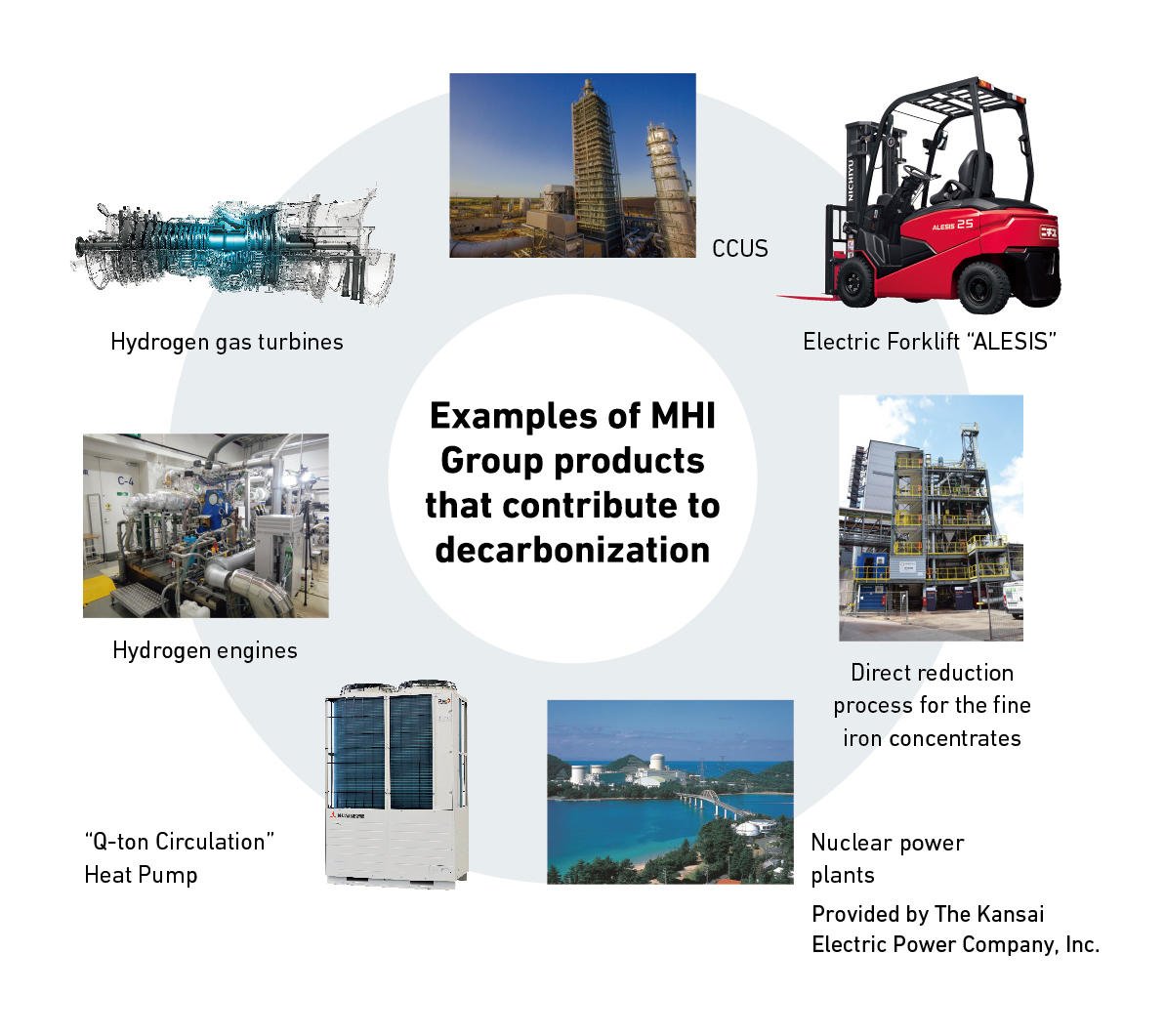MISSION NET ZERO
How MHI will achieve carbon neutrality by 2040
AD: Produced by Toyo Keizai Brand Studio

President and CEO, Mitsubishi Heavy Industries, Ltd.
Heavy industry is generally categorized as a hard-to-abate sector. Even so, Mitsubishi Heavy Industries (MHI) Group boldly declared “MISSION NET ZERO” in October 2021: setting a goal for MHI Group to achieve net zero CO2 emissions from its operations by 2040, as well as adopting a new goal to also achieve net zero through its entire value chain by the same date.
In this interview, Seiji Izumisawa, President and CEO of MHI, explains why the group set this ambitious 2040 target and is pledging to achieve carbon neutrality fully 10 years earlier than Japan itself and most other large, global companies.
- Contents
- ▼Balancing the fight against climate change with ensuring adequate energy supplies
▼Achieving net zero emissions through a company’s entire value chain
▼How our business growth will help us achieve net zero
▼There is no one-size-fits-all approach to the carbon neutrality
▼Coexistence, or “Tomoiki”, helps us achieve a carbon neutral world
Balancing the fight against climate change with ensuring adequate energy supplies
MHI Group provides a wide range of products that support society, from power generation to industrial machinery and aerospace. With so many products using fossil fuels, some people may think we will find it difficult to make progress toward a carbon neutral world.
In fact, MHI Group, as a technology leader in the energy and environment space, has been working on fossil fuel issues for many years. Izumisawa reminds us of the company's storied history:
"Japan has always had to rely on imports for fuel, and "how to use energy efficiently" has long been a challenge. Pollution problems also occurred during Japan’s economic miracle. MHI Group has developed cutting edge technologies such as high-efficiency gas turbines, exhaust gas treatment and heat pumps in order to solve these problems. Striking the right balance between protecting the planet’s long-term future and generating sufficient power to meet current and future demand is our duty and why we exist."
Achieving net zero emissions through a company’s entire value chain
Mission Net Zero, announced in October 2021, clearly shows the company's commitment to social responsibility.
In the declaration, as an interim step and in line with MHI’s commitment to addressing climate change, CO2 emissions from its own business activities will be reduced by half by 2030 (compared to 2014). These targets include the CO2 emissions emitted throughout its operations.
Furthermore, MHI is adopting a new goal to achieve net zero emissions through its entire value chain by 2040. It will aim to halve them by 2030 (compared to 2019). These targets include the reduction in emissions attributed to our customers’ use of our products and services.
MHI Group will tackle Scope 1 (which represents CO2 emissions arising directly from its own operations), Scope 2 (which represents indirect CO2 emissions, mainly from electricity consumption) and Scope 3 (which represents indirect CO2 emissions arising from other companies across the group’s value chain, excluding those covered by Scope 1 and 2) to achieve net zero emissions.
Why did MHI Group set 2040 as its target year? Izumisawa says he chose an earlier date in order to support the net zero plans of MHI’s clients. “For example, if customers using our group products aim to achieve carbon neutrality by 2050, they will have to install the system or equipment in their factory by 2045 and thus we must receive the order by 2040. Considering the lead times required for our technologies to be implemented in society, we have set 2040 as the target year."
One of MHI's mottos is "We deliver reliable and innovative solutions that make a lasting difference to customers and communities worldwide". Setting 2040 as the target is obviously in line with these principles. But no matter how worthy a goal is, it needs to be backed up with action.
"Each factory has already started energy conservation and decarbonization actions for Scope 1 and 2. But to actually achieve net zero emissions, we also have to make use of all available technologies and methods -- such as hydrogen, ammonia, renewable energy, energy storage, and energy conservation. We are pursuing solutions that integrate energy supply and demand by combining these technologies with energy management."

The biggest concern may be Scope 3, which requires customer CO2 emissions to be cut to zero. However, customers need to continuously adopt to market conditions, which creates many uncertainties. Having said that, Izumisawa is confident that MHI can help its clients navigate such difficulties.
"We announced our 2021 Medium-Term Business Plan (MTBP) in October 2020. Under this plan, many of our business units will develop products and services that consciously contribute to net zero. We will be able to decarbonize a customer’s emissions with such products, for example our Carbon Capture, Utilization & Storage (CCUS) technology. 2040 Net Zero, including the reduction contribution from CCUS, is a well-reached target.”
In fact, MHI Group is already a top player in CO2 capture technologies and world market leader in terms of CO2 capture from flue exhaust gas

How our business growth will help us achieve net zero
So how does MHI Group achieve carbon neutrality? MHI Group has set "Energy Transition" and "Smart Infrastructure" as its core growth areas in the MTBP. MHI also sees "Energy Transition" as an energy supply side and "Smart Infrastructure" as an energy demand side. MHI accelerates businesses in these areas and contributes to achieving a carbon neutral world.
MHI decided to invest 180 billion yen ($1.6 billion) in these two growth areas during the business plan. "Our group's ability to provide both supply and demand sides solutions at the same time is one of our unique and strong points", Izumisawa said.
From next fiscal year, the ratio of the total investment including Research and Development (R&D) and capital investment to businesses related to carbon neutrality including these two growth areas will be increased from 40% to 80%, and the total investment will be about 2 trillion yen ($17 billion) in the next 10 years.
There is no one-size-fits-all approach to the carbon neutrality
It is important to ensure a stable, realistic and incremental energy transition for each country and area.

"For example, Europe, where renewables are already available, is fine, but doing the same in Asia, which does not have as favorable conditions to expand renewable energy, can cause costs to be much higher. Therefore, MHI offers to decarbonize existing infrastructure, such as thermal power plants, by using hydrogen and ammonia, or to restart nuclear power plants. We should look for multiple pathways toward a carbon neutral world."
However, there is one barrier that we must overcome to boost the energy transition: building an ecosystem, embracing production, transport, storage and end markets. According to Izumisawa, "In the energy value chain, MHI group has played a part in plant installation. Now that we have reached a turning point in energy, MHI group must build a value chain, or ecosystem, from upstream to downstream by cooperating with various stakeholders globally - such as customers, suppliers and governments. I think this is a major challenge that will shape MHI’s direction for the next 100 years."
Coexistence, or “Tomoiki”, helps us achieve a carbon neutral world
In conclusion, Izumisawa turns to a traditional Japanese concept to encapsulate his thoughts:
"There is no question that it is important to protect our planet. However, economics is important too. MHI Group contributes to striking the right balance between protecting the planet’s long-term future and generating sufficient power to meet current and future demand with stable, realistic and incremental solutions. I like a traditional concept in Japanese culture – Tomoiki. It encompasses both our coexistence with nature and community in the present, and also our connection to the past and the future. I was recently asked by someone, “How can you commit to a target for 2040, when you will no longer be CEO then?” The answer is that it may not be realistic to think that I, myself, will be overseeing this commitment to the end, but I can pass that ambition on to my successors. That is what it means to take the helm of a long-standing organization like MHI Group. We pass the baton, and our aspirations, to each new generation.”





